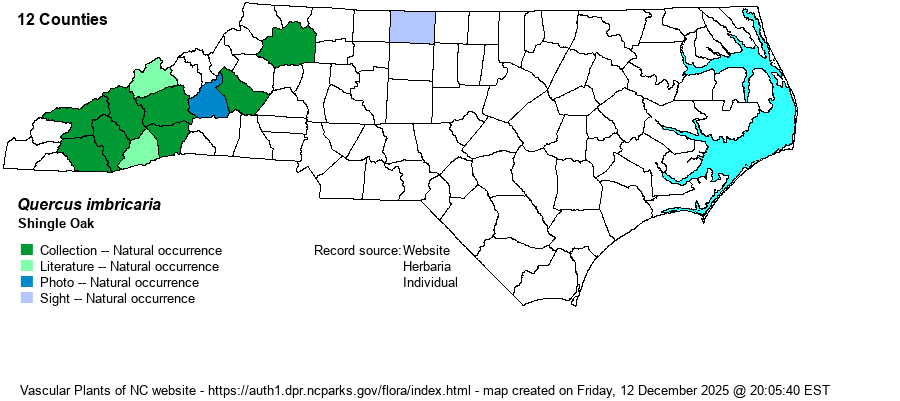| Author | Michaux | |
| Distribution | Widely scattered in the western quarter of the state. Within the Mountains, it is known only in the southern portions, from Buncombe County on the north to Macon County on the southwest. Only a few scattered Piedmont reports, east to Rockingham County. A few additional specimen records from farther southeast in the Piedmont are likely misidentifications or are probably non-natural occurrences.
This is a Midwestern species, ranging across the Appalachians east to PA and southern NJ, and south to western NC, northern GA, and northern LA. It is found in nearly all counties from OH west to MO.
| |
| Abundance | Locally uncommon in parts of the southern Mountains, such as along the French Broad and Little Tennessee rivers. However, mostly very rare elsewhere in the Mountains and apparently no records yet for the northern Mountains. Very rare in the Piedmont range, where it can and does range into upland flats over high pH soils. | |
| Habitat | In most of its range, and at most locales where found in the Mountains, it occurs in rich soils in floodplains, often of larger rivers. It does not occur on slopes or in deep forests, but is mainly found along river banks or in flats of floodplains, often in sunny or partially sunny conditions. In the Piedmont, it has been found on circumneutral soil of flats and glades. | |
| Phenology | Flowers in May, and fruits in October of the second year. | |
| Identification | Unless you spend much time in the Midwest, or in some floodplains in the southern mountains, this tree is likely unfamiliar. It is a medium deciduous tree, growing mainly to about 60-65 feet tall. It can really only be confused with Willow Oak (Q. phellos) and a hybrid -– Willow x Blackjack. Shingle Oak leaves are widely elliptic, about 5 inches long and about 1.5 inches wide, generally much wider than those of Willow Oak. The leaves are also quite shiny above; though the margins are entire, they can be a bit wavy-looking (i.e., the leaf isn’t quite flat). The Willow x Blackjack hybrid does occur in the Piedmont, and it is not rare there. However, the hybrid has glabrous leaves below, whereas Shingle Oak leaves are quite tomentose and pale below. Thus, when you see an oak with widely elliptic leaves but is unlobed, check the undersides to make sure they are pale and quite hairy before you claim a Shingle Oak. [Note that a great number of trees have the “standard” elliptical leaves with no serrations, so it is assumed that you can figure out a tree is an oak by the multiple terminal buds, or presence of acorns on the trees or the ground, etc.]. | |
| Taxonomic Comments | None
| |
| Other Common Name(s) | None | |
| State Rank | S3 | |
| Global Rank | G5 | |
| State Status | | |
| US Status | | |
| USACE-agcp | FAC link |
| USACE-emp | FAC link |

